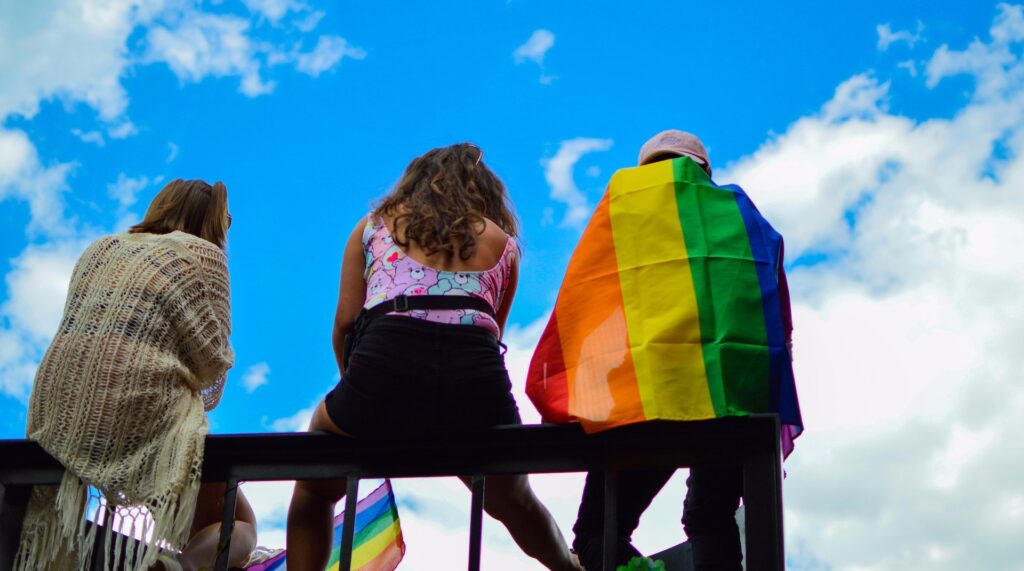Diverse Representation in YA Fiction: Writing Inclusive Stories That Matter
For decades, there has been a lack of diversity representation in YA fiction. So, how can you write inclusive stories that matter to readers? Learn more in this blog!
For decades, writing and publishing have been dominated by Caucasians in positions of power and as authors. According to an analysis by the New York Times in 2020, they estimate roughly 95% of the fiction books published in America from 1950 to 2018 were by white authors.
Since the unfortunate death of George Floyd sparked a hard look at diversity and inclusivity nationwide, very little has been done to effect real change in the industry. In an in-depth report from PEN America last year, change is happening but moving too slowly. The Cooperative Children’s Book Center (CCBC) supports this, noting a trend of increasing BIPOC and other diverse stories.
As I’ve pointed out before, in YA literature (well, ALL literature), people like to see themselves in the story. That’s probably why there are so many white-centric novels out there – there are just more of them writing and being published. That means it’s all the more important for diverse communities to have their voices heard and for Caucasian authors to do their due diligence and be mindful of building inclusive worlds.
So how do authors of color or writers on the spectrum of autism or part of the LGBTQIA+ community or who live with disabilities make their voices heard? How do the cis, non-disabled, non-diverse write with sensitivity and authenticity? It’s not easy, but the first step is to look around and realize our world is diverse.
Why Diversity and Inclusivity Matter in Young Adult Novels

As someone from a marginalized community, I want to see myself represented in the stories being told.
Speaking as someone from the US, when an author focuses on diversity and inclusivity, they’re writing about characters with disabilities, or who are sexually diverse, maybe BIPOC, follow different religions, or stem from cultures foreign to what’s expected in North America or Europe.
Essentially, it means writing less about the overrepresented cis-gender, straight, non-disabled, attractive, neurotypical white man. That doesn’t mean those voices are invalid, just that they’re still incredibly prevalent that those audiences won’t struggle to find themselves in those stories.
The World is Diverse

So, circling back, whether it’s medieval fantasy, modern love, or an 1800s mystery, there’s no reason the world can’t be diverse and inclusive. As an author, you have the power to create a version of the world that speaks to the audience you feel needs to be seen and heard.
Modern media is doing a much better job, looking at TV shows, for example, like Bridgerton or The Lord of the Rings: The Rings of Power or Atypical. They’re trying to reflect the demographic shift and demand for more visibility of underrepresented communities.
Often, it’s still shifting into tokenism and ticking boxes, but they’re still steps in a better direction that hits the mark and tells meaningful stories from time to time. And that can be so important to someone of those communities since it tells them they matter and that, someday, they can achieve what they read on the page or see on the screen.
The “Normal” Point of View

For white audiences, it means something different. Again, this isn’t some call to erase Caucasians from modern literature because they’ll always be part of the world and have unique stories to tell.
But it does offer an opportunity for that majority of white authors and readers alike to explore something new. When people experience diversity and inclusivity, their worldview expands. They start to see the value in different cultures or beliefs and understand there’s more to the world than simply how their white family raised them and, likely, the community.
Through diverse and inclusive YA fiction, they can empathize and celebrate with people unlike themselves, which is so crucial in the ever-growing melting pot of our world!
So, when you start looking into inclusivity and diversity representation in YA fiction, consider these topics:
- Race, Ethnicity, Culture, and Immigration
- LGBTQIA+ and Sexuality
- Social Justice
- Neurodivergence/Neurodiversity
- Physical Disabilities
- Mental Health
- Political and Societal Structures
Essentially, where do you want to see a change from the status quo for the benefit of everyone? Write that. The world needs to read it.
Streamline Your Process
The Tool Every Writer Needs

Tips for Writing with Diversity and Inclusivity in Mind

As you dive into writing a more inclusive and diverse story, there are things to be mindful of. It doesn’t matter if you’re of the represented community or not. These broad guidelines should hold true for any author wading into what is often sensitive territory.
If you’re speaking from your own lived experiences or as an outsider looking to include more diversity and inclusivity, you want to do good. Misrepresenting any marginalized voice, no matter how well-intended, will do more harm in the end.
1. Research and Education
If you haven’t been writing about people, cultures, places, and such different from your own lived experiences out of fear, let me tell you about a little thing called “research.” The internet, your local library, and people from marginalized communities are excellent resources to help you learn more about the world you can portray in your YA novel.
If you want to get it right, go to the source. Find books written by authors representative of those communities, read articles from diverse perspectives, and maybe even take a class or two. You have the power to affect change, and limited knowledge should not be the barrier to entry.
2. Creating Authentic Characters
Don’t write in a diverse or inclusive character just for the sake of it. That’s the wrong reason, leading to misuse and misrepresentation through stereotyping, tokenism, and even objectification.
Plus, that’s just bad writing, often rife with clichés. Instead, explore their backgrounds and motivations, how they speak, and how having a marginalized voice does or doesn’t affect their worldview. If they’re not your protagonist, they shouldn’t be a plot device for a hero of privilege.
Consider this: you have the pleasure of seeing things from another point of view and making some readers out there feel truly seen. So, see beyond the color of their skin, their choice of partners, or divergent neural pathways, and remember that they’re still real people you want to empathize with in some way. Writing believably real people makes for much better reading anyway.
3. Inclusive World-Building
Inclusivity and diversity aren’t simply about the people. Society plays a big part in how intermingled our world can be. And it’s your world, so take the opportunity to build a better, more inclusive society.
Or use this as a chance to explore why society or its politics stand in the way of diversity and inclusivity. Even if it’s a fantasy or sci-fi world, you can still apply real-world desires for social justice and change that can provoke thought.
Your YA novel has the power to open readers to completely different cultures and concepts than they may be capable of physically exploring. Use that opportunity.
4. Sensitivity Readers
The above items are due diligence and the makings of a better story that will make your YA novel more inclusive and diverse. But that doesn’t mean you can just send it out to the masses. Whether you’re writing through a caucasian, gay, BIPOC, disabled, or whatever-you-may-be lens, it’s crucial to involve sensitivity readers. Thankfully, they’re simple enough to find online, so make time to track someone down.
Now, firstly, yes, this is very important for the “typical” cis-gendered straight white author. When exploring beyond their often privileged lives, there’s a responsibility to check in with the voices they seek to amplify. Are they doing them justice? Are they using proper terminology and concepts?
Is anything you’re writing offensive, objectifying, or tokenism? I won’t lie: it’s a bit of a minefield for white authors. If your heart is in the right place and you’re not just chasing trends, know that the efforts are appreciated, and taking this extra step to get feedback on the diverse and inclusive aspects of your story will make it all the better.
As for people of a particular underrepresented community, some of the above still hold true if you’re writing outside your comfort zone. For myself, I can certainly speak to my lived experiences as a young black man.
But if I want to include a character who’s, say, raised culturally Chinese in Chicago or lives life in a wheelchair, I would hardly know where to start. Another angle is as we delve into lived experiences as a marginalized voice, our voices can find some heat as we express them.
That’s another way sensitivity readers can help us communicate to amplify our cause in the best ways possible instead of alienating the very readers who could benefit from understanding diverse and inclusive stories.
Inclusivity and diversity representation in YA fiction are sensitive to handle. If done wrong, you not only harm the community you seek to represent but your credibility as an author, whether you’re a member of said community or not.
That doesn’t mean you should be scared to do it, though. It takes real bravery to step out of one’s comfort zone and try to see things from a different perspective or for others to share their marginalized voice.
You may learn some great and some hard truths about different people, but most importantly, you’ll learn. That’s what makes writing an inclusive and diverse story so wonderful: helping people see their lives in your words while others can learn something new.
If you want to talk to me about writing more inclusively and with diversity in mind, I’m all for it. I may also be able to offer a sensitivity read, too. You can email me at jsims@jairesims.com or reach out through social media.







